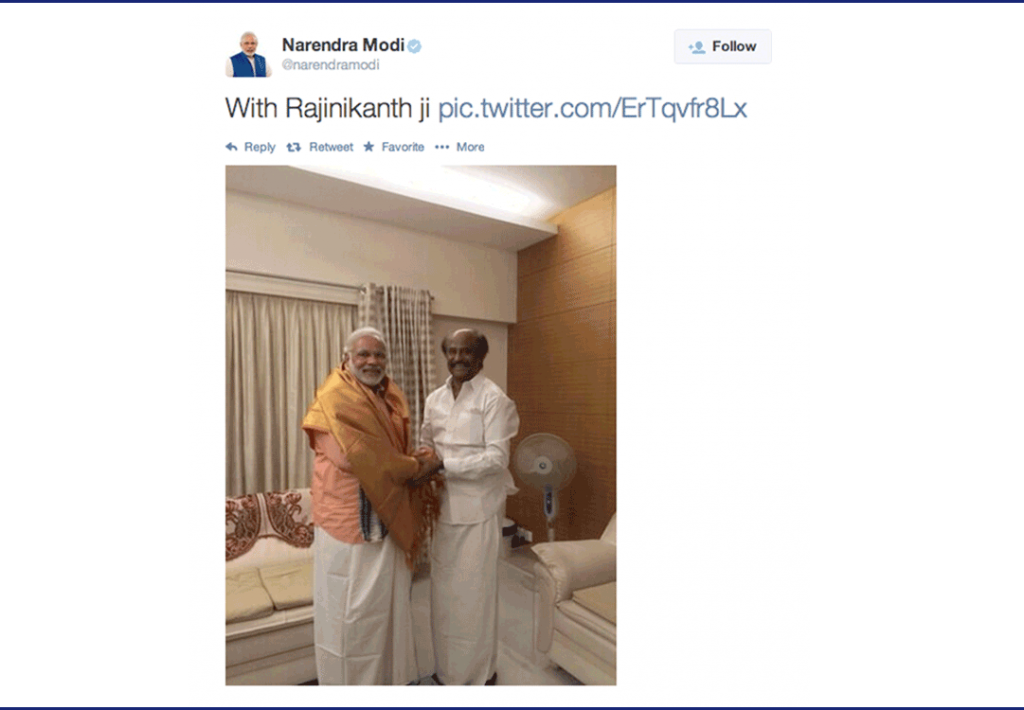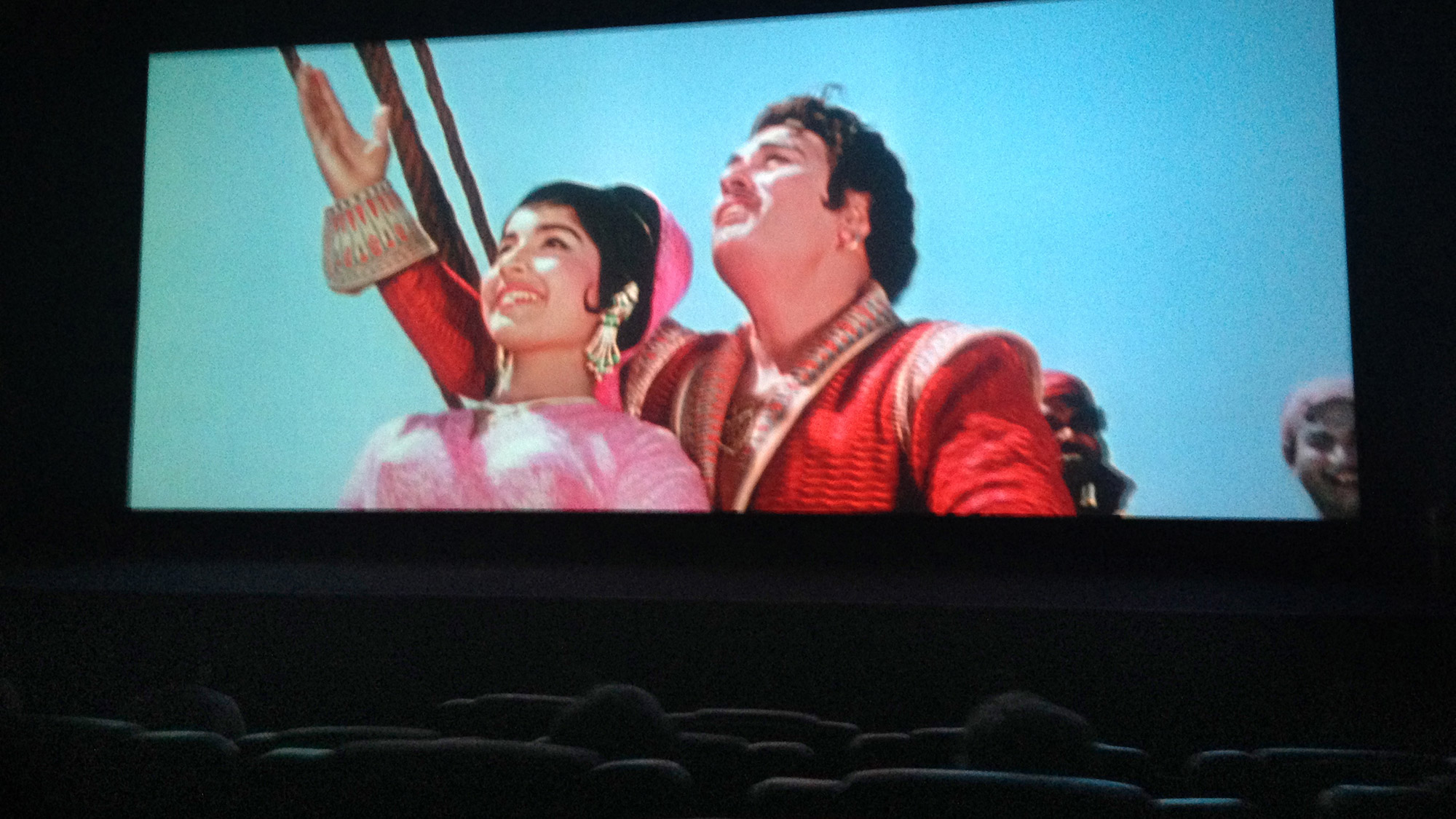
STAR SYSTEM
AND POLITICAL POWERHand in hand in Tamil Nadu
On the screen of a cinema in Chennai are Late Dr. M.G. Ramachandran (former Chief Minister of Tamil Nadu 1977-87) and Dr. J. Jayalalitha (incumbent Chief Minister of Tamil Nadu) from the 1965 movie ‘Ayirathil Oruvan’ ( One in a Thousand). This movie was re-released in Tamil Nadu just before the start of the 2014 Lok Sabha elections.
Dr. M.G. Ramachandran (popularly MGR), the founder of the party AIADMK(All India Dravida Munnetra Kazhagam) is the first film star to become the Chief Minister of a state in India. Since the late 40s films and politics have a long, multi-dimensional history in Tamil Nadu, than in any other Indian state. Since 1967 five of the six chief ministers that Tamil Nadu has had are from the film industry.
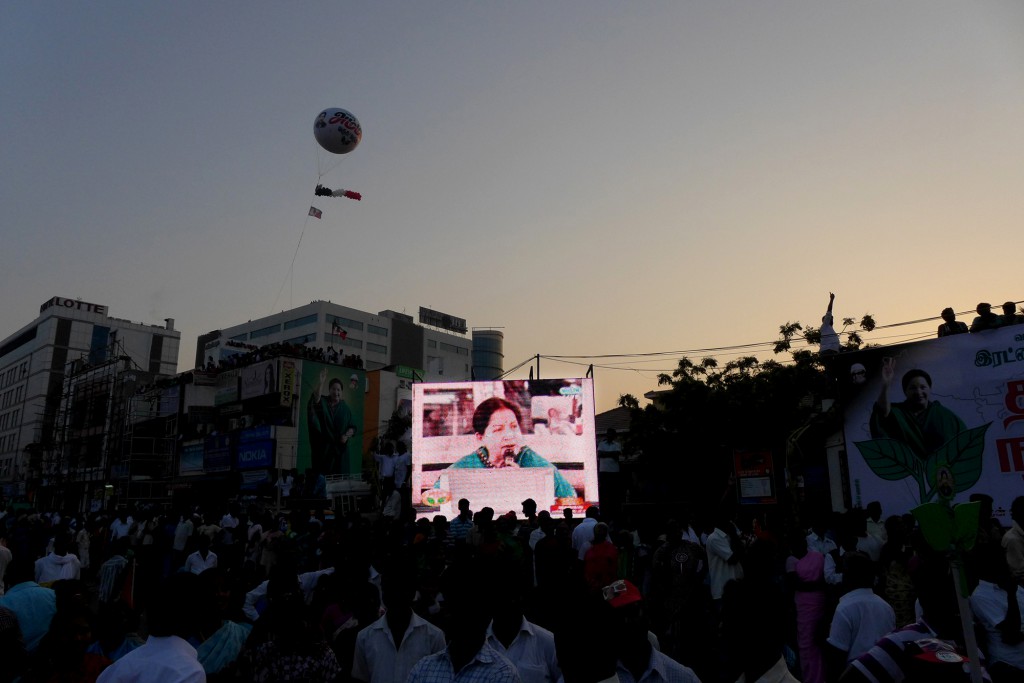
Above: election campaign in Chennai , 2014. J. Jayalalitha on screen during a campaign rally for her party AIADMK. Dr. J. Jayalalitha has acted in over 140 films as the lead heroine.
In independent India, DMK was the first and at that time the only party that took films as a vehicle for political mobilisation. During the late 1940s the leaders of the DMK tapped the power of cinema to promote their ideologies.
Below: from the 1958 film “Nadodi Mannan” (“Vagabond King”) made by Em.Gee. Ar productions which bears the party flag of DMK. Riding on the popularity of cinema in Tamil Nadu, their films kept portraying the party symbols and references directly or indirectly.
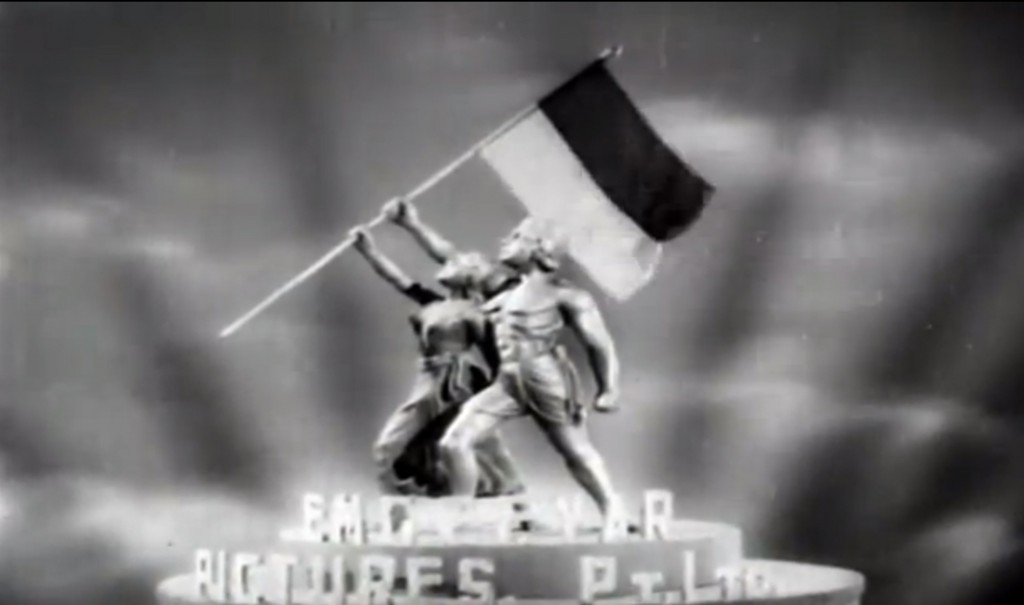
“Parasakthi” (“The Goddess”, 1952) is considered the most controversial film of Tamil cinema and also has the one that is considered the most controversial scene. Parasakthi was a major success in propagating the ideology of the DMK party. ‘‘My intention was to introduce the ideas and policies of social reform and justice in the films and bring up the status of the Tamil language as they were called for in DMK policies’’, says Karunanidhi, the script writer of the film. Karunanidhi later went on to become the Chief Minister of Tamil Nadu five times and is present head of DMK party.
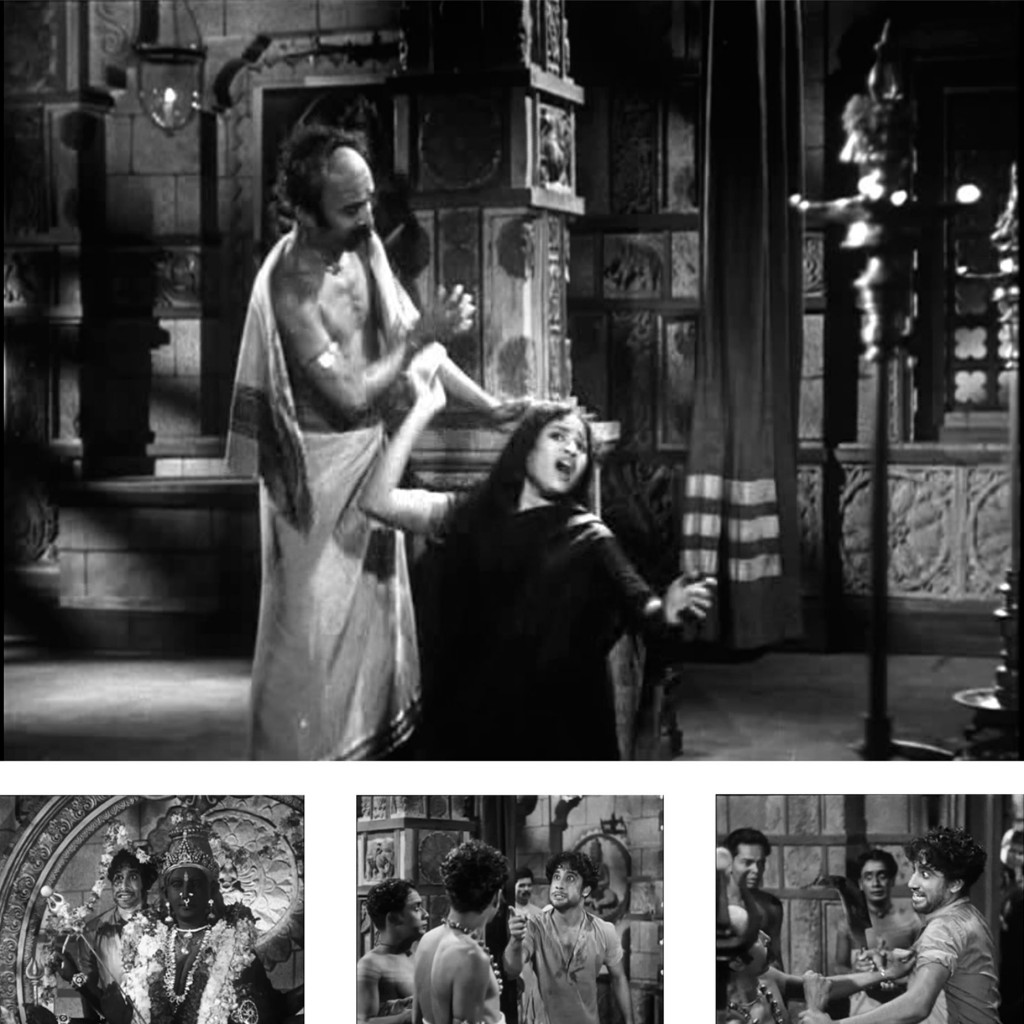
Above: This is a scene of a temple priest attempting to molest a woman who has come to pray to Parasakthi (A hindu goddess) inside the premises. The film made radical commentary on the caste hierarchy and also put forth the Dravidian rationalist ideology. The images below are the scene where the brother of the woman confronts the priest within the temple and says “Just because you came around chanting names and offered flowers to the stone, would it become a god?”
Over time, from using films for propagating ideology, the DMK sought to capitalise on star popularity as a vehicle for political mobilisation. MGR became the face of DMK from early 60s. With the mass appeal of MGR and the words of writers of the DMK, like C.N Annadurai and M. Karunanidhi, films made a huge impact on the masses. This eventually lead to DMK winning the elections for the first time in 1967.
Below: MGR in a scene from the 1971 film “Rickshawkaran”. On the framed picture is C.N. Annadurai, the founder of DMK.

The opening sequence (below) of the 1975 film “Idhayakkani” (“Heart’s fruit”) shows a cut out image of C.N. Annadurai speaking these words about MGR. In 1972 MGR left DMK and formed his own party and named it ADMK (Anna Dravida Munnetra Kazhagam). ‘Anna’ refers to C.N. Annadurai, whom MGR revered to be his political mentor. In a song from the film “Nam Naadu” (Our Nation) MGR refers to Anna as the “South Indian Gandhi”.

C.N. Annadurai is once supposed to have said about MGR, ‘‘When we show his face, we get 40,000 votes; when he speaks a few words, we get 4 lakhs.’’ (Robert L. Hardgrave, Jr. 2008, p 71) Most MGR’s fans have been the party supporters, and many were drawn to the party because of the star that MGR is. For MGR, ‘‘Art and politics are the two sides of the same coin.’’ (Quoted in Kalaichelvan 1967, p. 13). Even MGR’s production company shows a couple holding the party flag, and his films are filled with both direct and indirect references to the party.
Below: in this frame the party flag appears in the background.
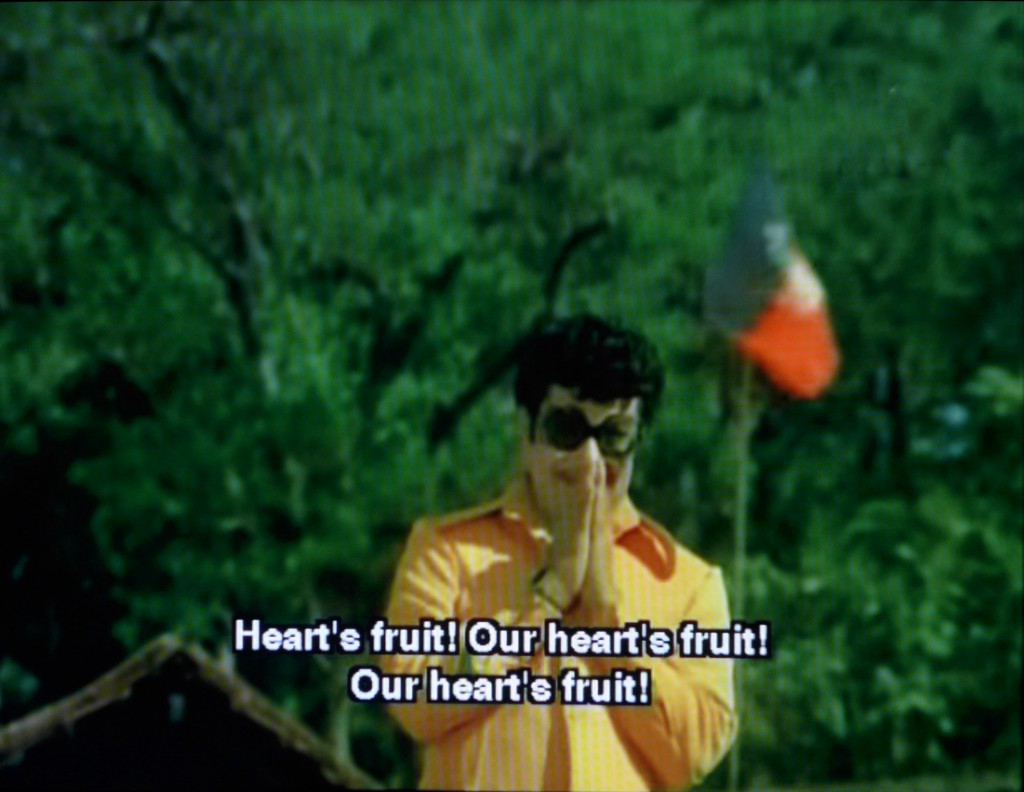
Songs and lyrics played a major role in communicating the ideals to the masses. For the MGR fans, he is the projection of what he is on screen; for them MGR the person and the cinematic characters he plays are no different.
Below: A song with lyrics from the film 1966 “Naan Aanai Ittal” (“I Swear”).
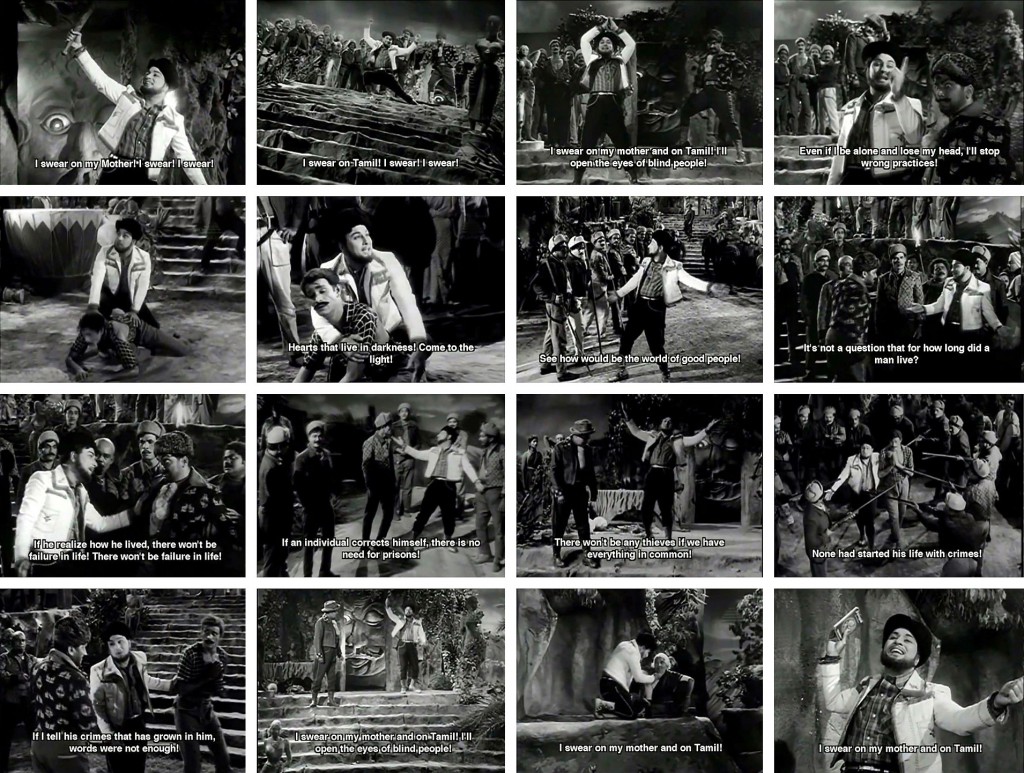
“MGR sees himself as the ‘protector’ of the common man and is convinced of the moral purpose of his films.” ‘‘My roles have been to show how a man should live and believe’’ (Interview, Ramachandran, Robert L. Hardgrave, Jr. 2008, p 68).
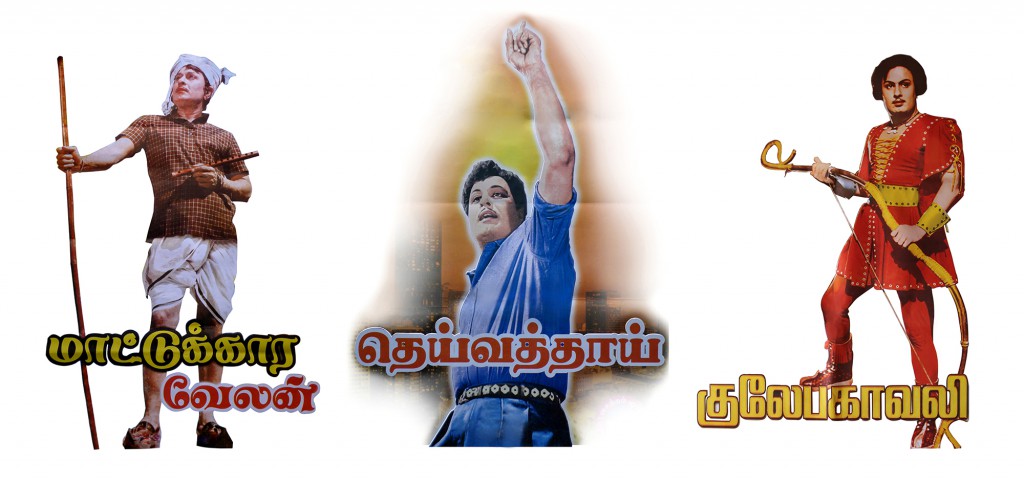
Posters showing MGR in different roles from various films. Posters were also a major tool for reaching the masses. Before the release of a film the posters are pasted on walls all over the town.
Whatever be the role, a cow herd or a king, his roles have been invariably about a man fighting against the social evils that mar the country.
There are several thousand fan clubs for MGR in South India. A club could be formed even with three or four members. None of the clubs is officially affiliated to the party. But the fans, who were captivated by MGR’s enactment of his personal and political values in all his movies, played a role of great consequence in his electoral success.
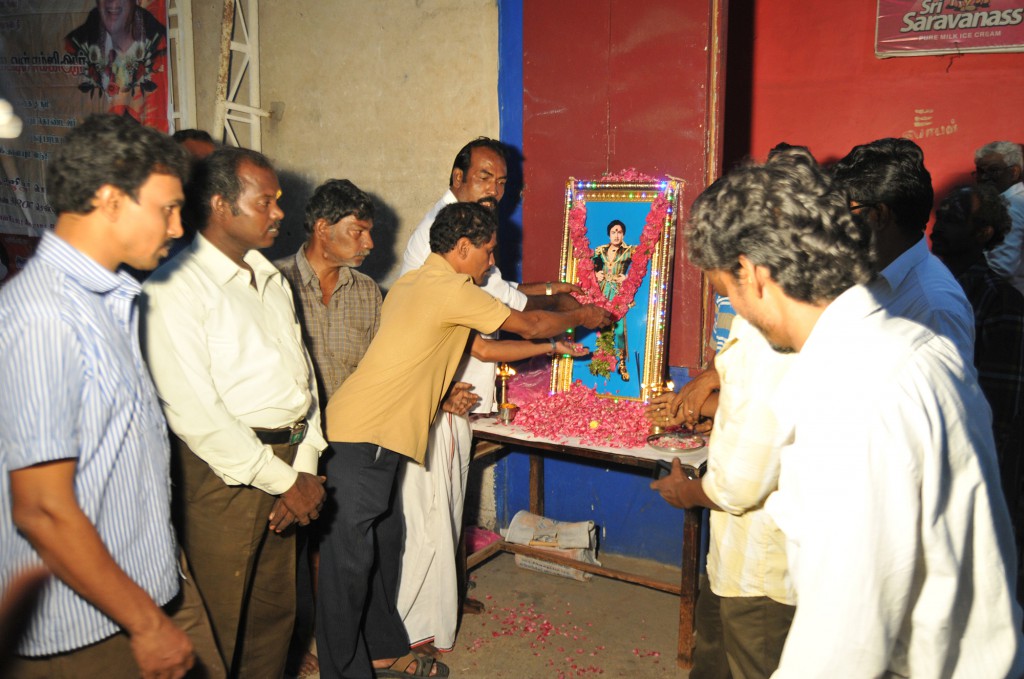
Above: fans garlanding a framed poster of MGR before the re-release of a MGR film at Central theatre, Madurai, 2012. To this day MGR’s films of the yore are frequently re-released in various parts of Tamil Nadu.
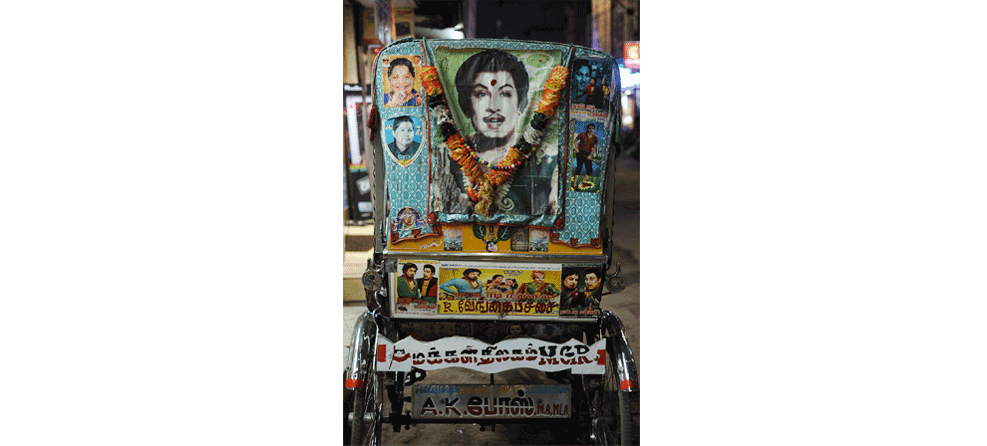
“A Rickshaw man is regarded as the archetype of the MGR fan, the poor man of the labouring classes.” (Robert L. Hardgrave, Jr. 2008, p 68)
Rickshaws are adorned with photos of MGR film. This is perhaps a way of displaying their loyalty to MGR, a man whom they believe seamlessly lived the real and cinematic life as one.
Below: ‘The End’ from the 1971 film “Neerum Neruppum” (“Water and Fire”). The victorious King and Queen that is MGR and Jayalalitha respectively, wave to the people of their country. A happy ending that saves the masses from the tyrannies of the evil rulers.

MGR and Jayalalitha have acted together in around 25 films. Jayalalitha’s involvement in the party began as a campaigner. She then became a member and went on to lead the party after MGR’s death. She is now the incumbent general secretary of the AIADMK party.
Jayalalitha, when she became Chief Minister of Tamil Nadu in 1991, was the first woman to hold this role.
Below: a photograph of Jayalalitha first day. Her cut out is part of the backdrop. Cut out advertisements of stars were first introduced by cinema production houses to promote their films and their stars before and during the screening of films. As politics and films started overlapping all the cinematic ways were introduced into politics and vice versa. (This photograph was acquired from the archive of Modern Photo Flash Studio in Trichy, Tamil Nadu. Photograph was taken by Jameel )
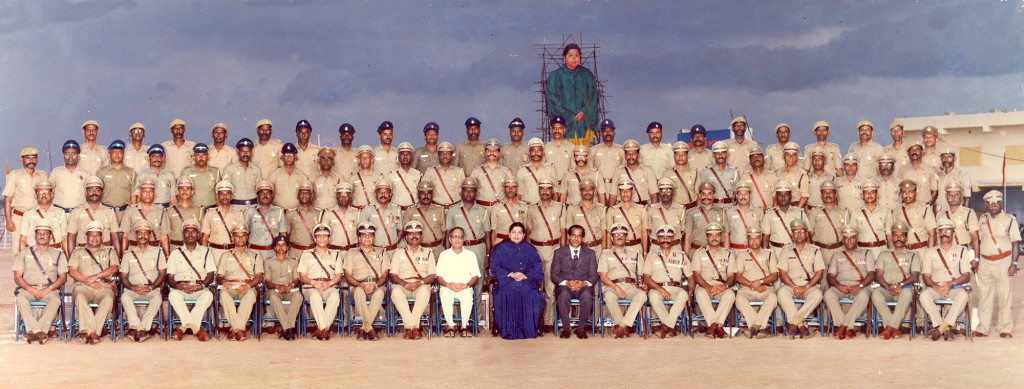
Below: Cutouts of films stars and politicians in an outdoor photo studio at Marina Beach, Chennai. The cut outs of former Chief Ministers M.Karunanidhi and MGR (extreme right) share space with the current film stars of India.
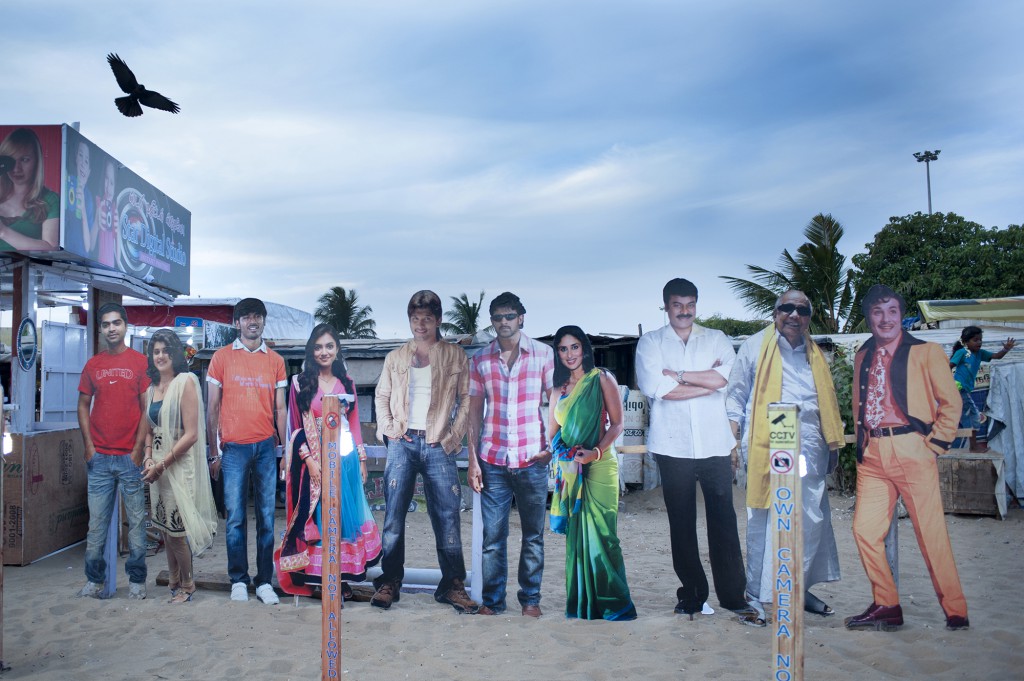
Vijaykanth is currently an active and prominent actor-politician in Tamil Nadu. He founded the party DMDK (Dravida Murpokku Desiya Kazhagam) in 2006. Vijaykanth has to a large extent modelled both his film and political careers along the lines followed by MGR and is even called by some of his fans as the Karuppu MGR (meaning ‘Dark Skinned MGR’).

Above: in these posters for promoting the candidates of the alliance under the BJP (Bharathiya Janatha Party) for the 2014 elections in Tamil Nadu, Vijaykanth has been named as ‘Captain’ - based on a character he played in one of his films. Such titles and aliases are conspicuously used for both film actors and politicians in Tamil Nadu.
Below: Kushboo, a popular actress from the 90s is seen campaigning for DMK during the 2014 elections. She is currently a member of DMK and actively campaigns during the elections. She has acted in over 100 films. Over the years many film stars have been supporting parties they align with. Some merely support during the electoral campaign while some become active members of the party.
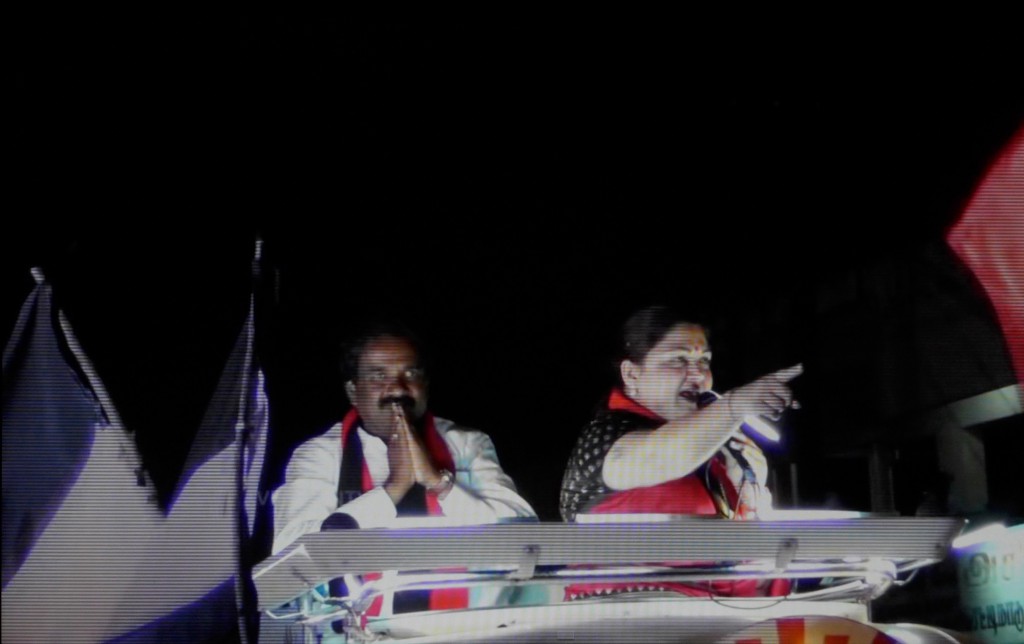
Narendra Modi, the Prime Ministerial candidate of the BJP, with Tamil actor Rajinikanth, whom he met recently during his election campaign tour in Tamil Nadu. Rajinikanth, active actor and arguably the most famous superstar of tamil cinema after MGR, is estimated to have over 50,000 fan clubs across the globe.
In spite of being wooed by several parties and the expectations of his own fans, Rajinikanth has avoided venturing directly into electoral politics.
Many politicians have actively sought his support during the electoral campaigns. It is believed that having a photograph with Rajinikanth would help in garnering the votes from his fans.
Narendra Modi has posted this photo on his twitter page.
